Heading out the door? Read this article on the new Outside+ app available now on iOS devices for members! Download the app.
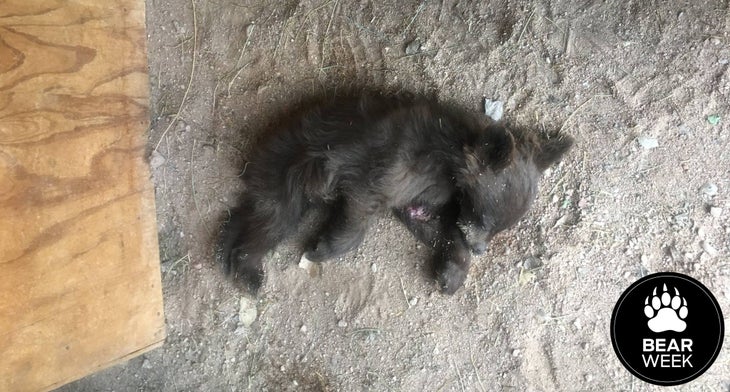
At Cottonwood Rehab, Dr. Kathleen Ramsey is giving orphaned baby bears a second chance. Blue Beary, pictured, came in with a major wound and broken bones from a car accident. Ramsay and a team of vets from Veterinary Care Hospital operated to fix her broken elbow, and nursed her back to health.
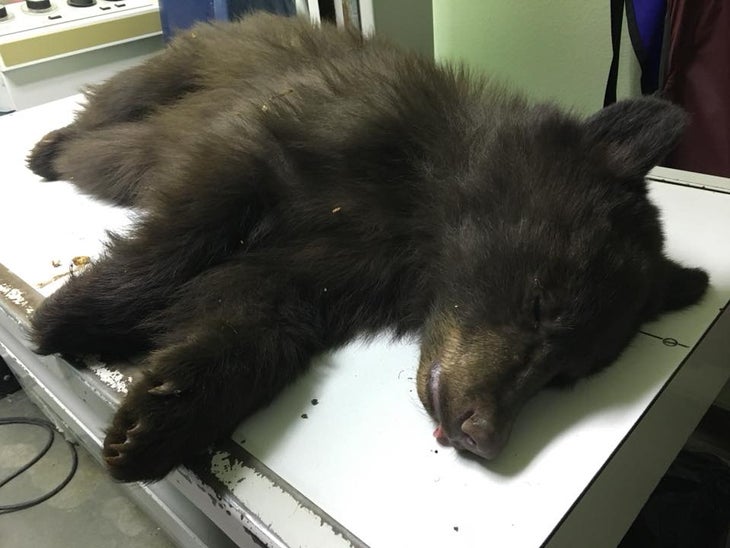
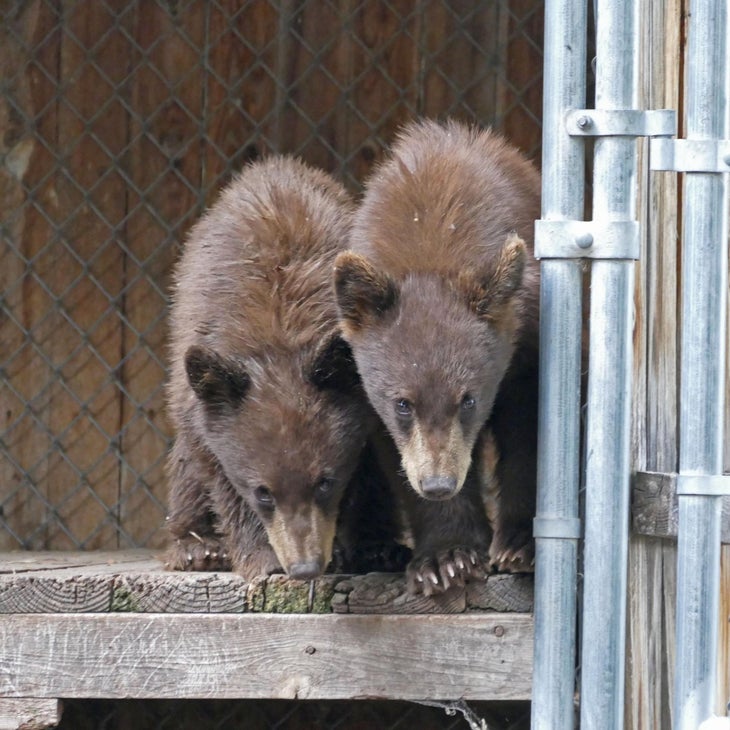
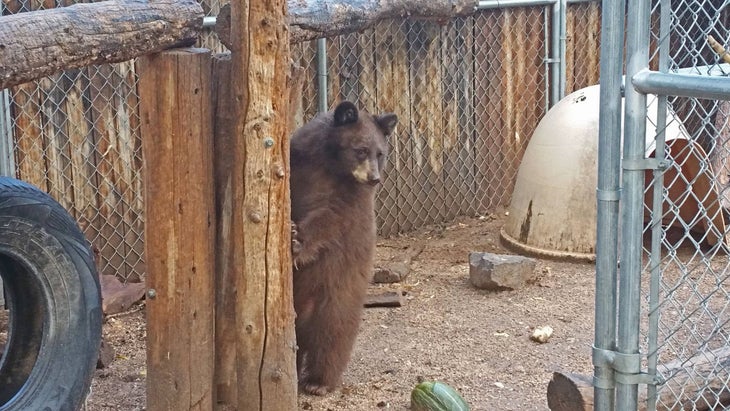
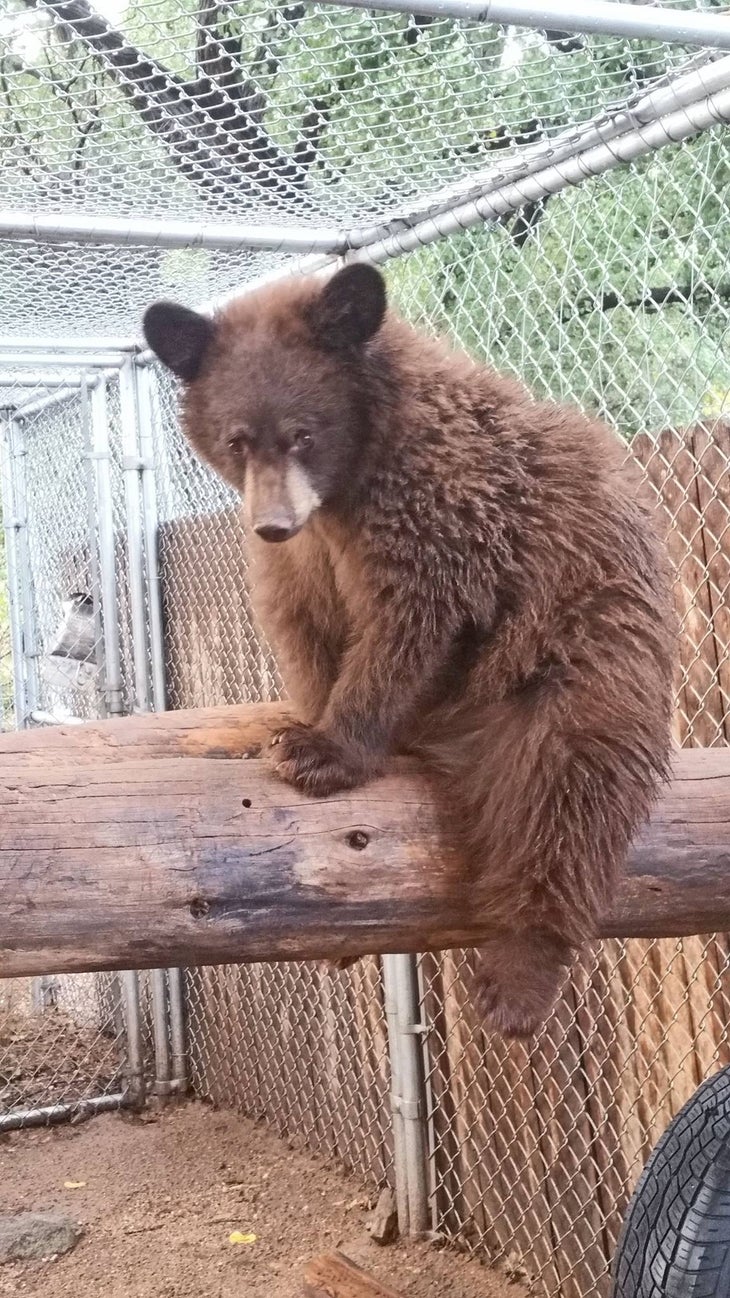
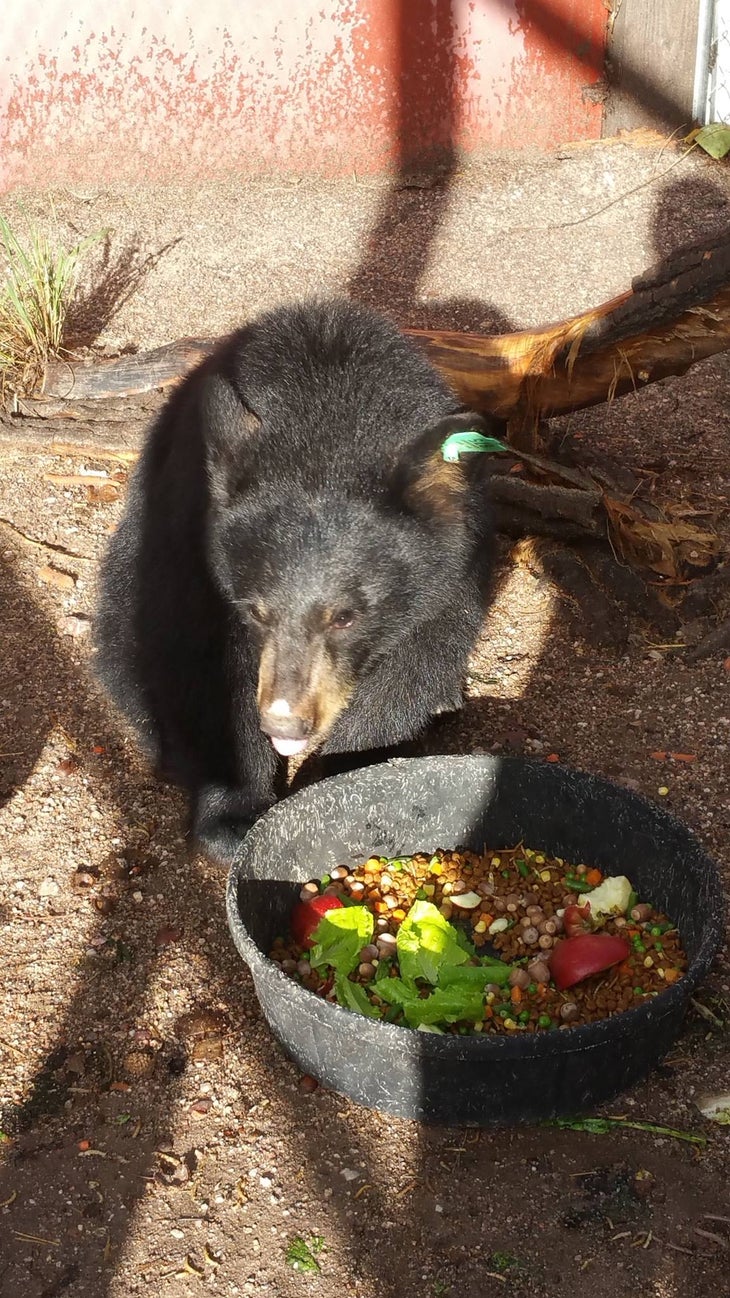
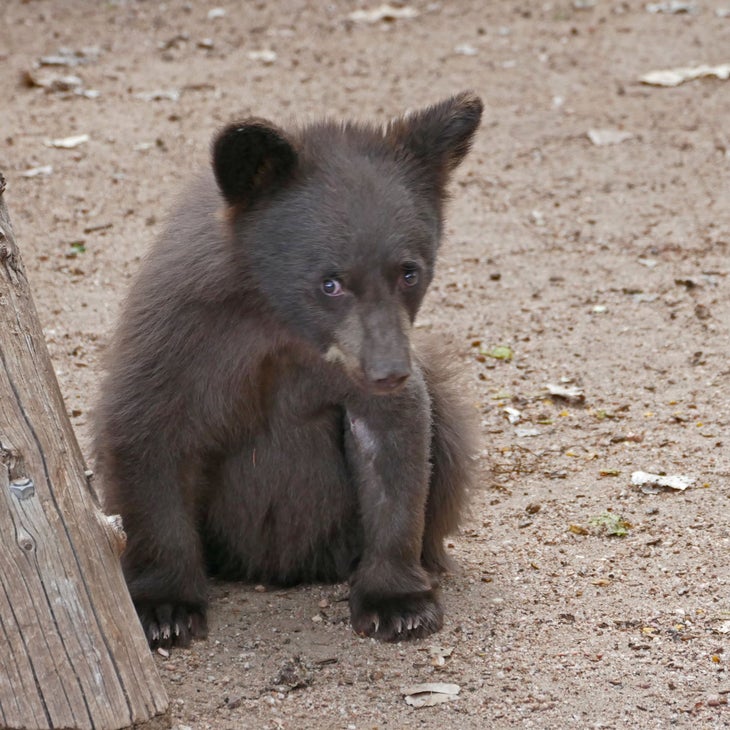
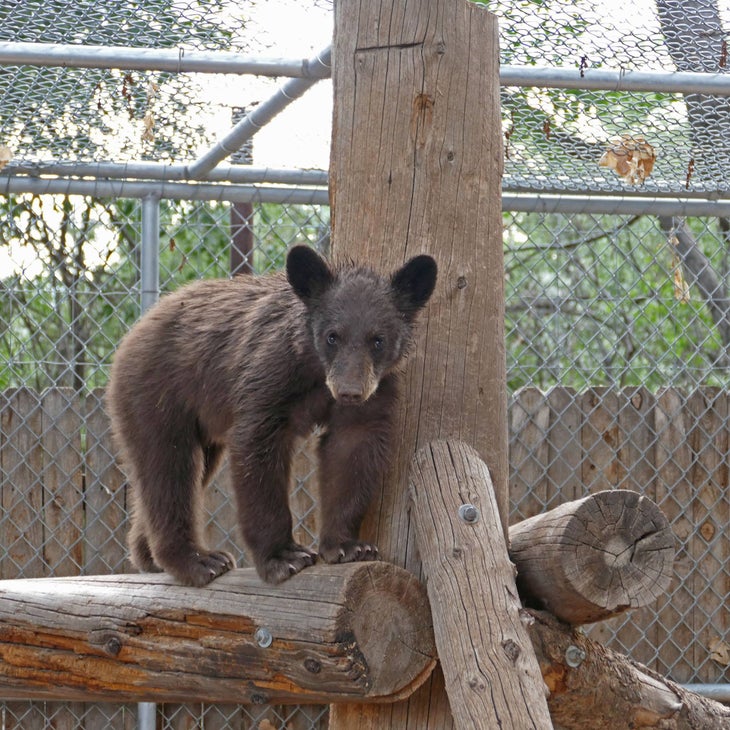
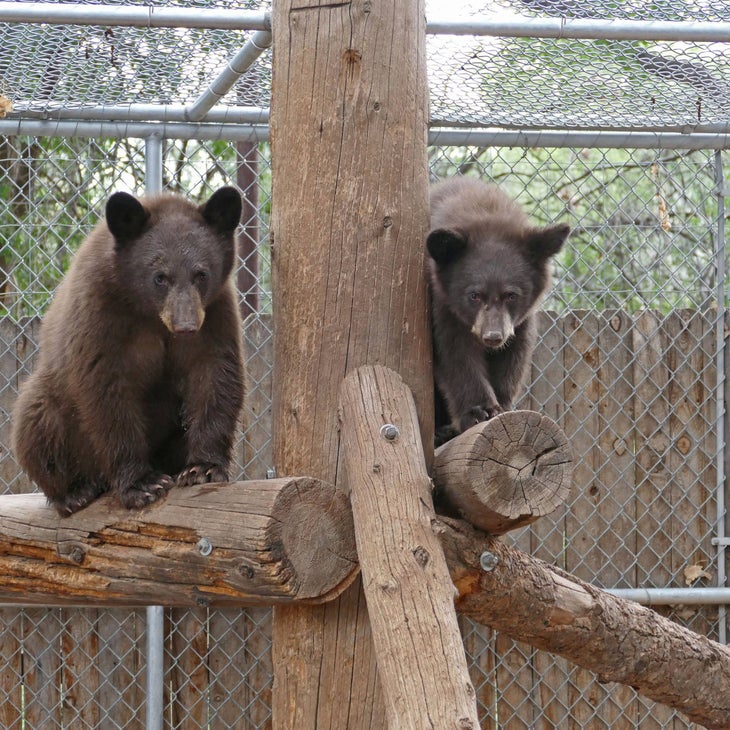
Kathleen Ramsay has taken bear cubs home with her for years: “I’ve rehabbed over 600 bears—so just a few little fuzzies,” jokes the northern New Mexico veterinarian, who started with birds of prey but couldn’t bring herself to turn away the mammals that kept showing up. “I feel that it’s very important that wildlife get a second chance at staying alive.”
Today, Ramsay’s donation-based organization, Cottonwood Rehab, is a go-to for the state game and fish department when they encounter injured wildlife. For years, she’s provided a rare option for bears in need.
This summer, she’s operated on limbs broken during highway crossings or by cornfield combines, and repaired damage done to a cub mauled by a pit bull. These surgeries can cost $4,000 a piece, stacked up in the form of hardware and anesthesia, priced at $90 a vial. Last year was a little harder on the humans, with Ramsay taking in cubs after a mother bear injured a runner who surprised her mid-ultramarathon (the adult bear was killed to test it for rabies).
She’s built seven fenced enclosures—complete with chain-link rooftops—of nearly 20,000 square feet each, spread over 4.5 acres. A quiet stretch of river and an orchard wrap around the facility. Young cubs fit three to four in an enclosure. Their L-shape design allows bears retreat to one end while she cleans the other or stocks it with food, helping to keep them as little habituated to humans as possible.
Her bears are ear-tagged upon their release. Based on when those tags turn back up with the state game and fish department (usually from hunters) 85 percent of the cubs she releases survive at least five years. She credits the success to her rural location and the limited exposure bears have to humans, even while in human care. It’s just her that tends them, unless she’s sick, and then it’s one of her sons, limiting the humans bears get used to smelling or hearing.
Radio tracking is often too expensive, but one year she was able to collar the cubs released.
“Of 36, two were destroyed in the first two years, one because it climbed into apple tree and the people freaked,” she says. The other climbed onto a canvas-topped camper in search of food, and tore through it. Again, the people freaked.”
The math for how the cubs end up at her doorstep is simple.
“If humans begin to encroach in all of their territory,” she says, “they’re driven into more and more human encounters.”
Bears that stand the best chance of lasting in the wild are those smart about avoiding people. But it wouldn’t hurt, she charges, for humans to be a little smarter about living in bear country, instead of essentially baiting them into town with barbeque grills and birdfeeders.
“We humans are slobs—and we’re lazy slobs,” she says. “We feed our dog on the back porch and leave the food out, and son of a gun, I’ve got a bear. We put the trash out the night before, and son of a gun, it’s all down the street.”
She’s up to 13 bears this year, but expects that’s just a start. A spring drought followed by a frost in May killed off the acorn and chokecherry crops, and will likely compel bears to move closer to towns in search of snacks. That likely means more highway crossings and more encounters in apple orchards and backyards, and those don’t always end in just a full belly for the bear. In 2011, facing similar conditions, she housed nearly 70 bears.
“I foresee a very long, hard winter because the last three cubs that came in were all tiny,” she says. “They were not carrying the weight load they need to hibernate.”
Vanishing food sources in fall propel bears toward hibernation, but they only sleep as long as their fat stores allow. In midwinter, they’ll start resurfacing in her facility after hikers call the state game department in about skinny bears wandering the woods. Ramsay takes them in and gives them a second chance at fattening up, then sets them loose again in the spring.
Her techniques, she says, are “just years of practice, and God bless the computer.” The internet allowed her to mail order acorns from Arkansas this year and purchase freeze-dried grasshoppers.
She rises at 4:30 in the morning to clean bear cages and stock them with food. The goal is to train them to survive, not just feed them to live.
“The more I can teach them their natural foods, the better they’re going to do,” she says.
A special permit from the U.S. Forest Service allows her to prune bushes to bring her bears rose hips, piñon pine, and acorns on the branches. Tied to the cages, they approximate the experience of a wild harvest. Aspen catkins—flowers that emerge before the tree leafs out that produce a small fruit and then tiny seeds—are the first meal of the spring.
In another area of her yard, Ramsay lays tree trunks to rot, then delivers them in chunks so bears learn to shred the wood and devour the insects they host. She moves rocks into the cages and loads the undersides with mealworms and grubs. Bones from the butcher with a few meaty traces get tossed in, and sometimes, local grocery stores pass along near-spoiled fruit or vegetables to supplement. She aims for close to natural fare: salad mixes, the same fruit they’d find when they raid orchards, even Brussels sprouts. When she takes in bears from New Mexico’s southern, desert regions, she’ll drive hours to that end of the state to knock on doors and ask people if she can harvest prickly pear fruit from their yards.
Cubs that spent the summer with her will be released at the end of hunting season, usually somewhere high in the mountains amid the fir, spruce, and aspen. Within two weeks, they’ll be settled into a den. She’s fattened them up to a weight they’d likely never reach in the wild, she says, so that when they emerge in May they’ll still have a little fat on them, buying them some time to blunder as they locate a territory and identify what it offers to eat. As one of her sons has said, there’s no better sight than that “jelly belly” of an overfed bear—running down the mountain away from you.